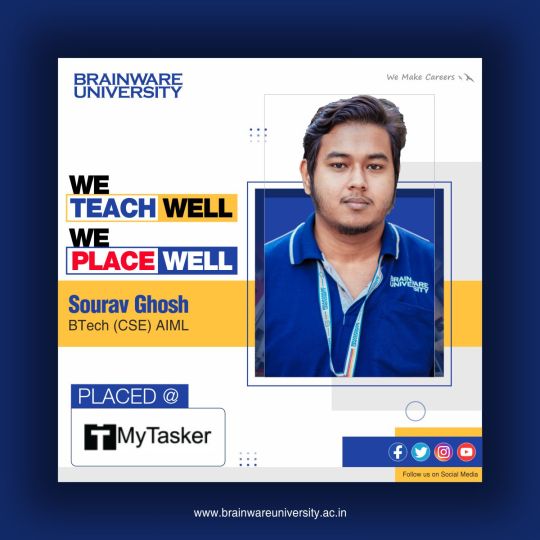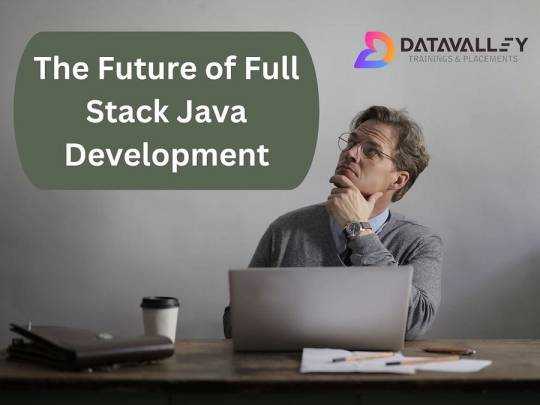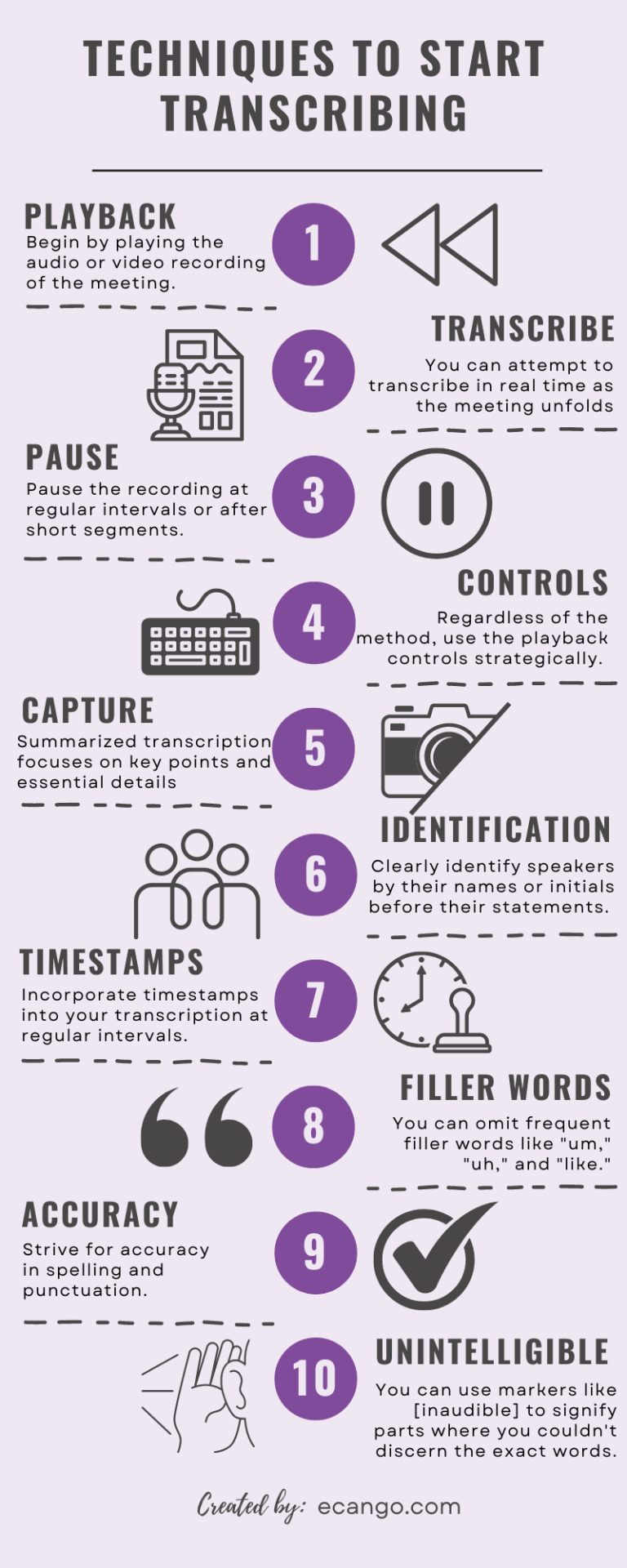#data engineering and business intelligence
Explore tagged Tumblr posts
Text
This blog will explore how BI and analytics can be applied in various aspects of retail operations, including inventory management, pricing, marketing, customer service, and more.
#data engineering and data analytics#data engineering#data engineering service#data engineering and business intelligence#data engineering and bi expertise#business intelligence services#business intelligence#custom business intelligence solutions#bi and analytics#Business Intelligence services#bi service
0 notes
Text
Explore how Impressico Business Solutions delivers cutting-edge business intelligence services and solutions in Toronto. From data integration and ETL development to predictive analytics and visualization, Impressico empowers organizations to transform raw data into actionable insights, driving strategic decision-making and fostering growth in Toronto's competitive business landscape.
#Data Engineering Solutions in Toronto#Bi Solution Toronto#Bi Solution#Business Intelligence Toronto#Data Engineering Consulting Services in Toronto#Business Intelligence Services and Solutions in Toronto#Business Intelligence
0 notes
Text

Explore IGMPI’s Big Data Analytics program, designed for professionals seeking expertise in data-driven decision-making. Learn advanced analytics techniques, data mining, machine learning, and business intelligence tools to excel in the fast-evolving world of big data.
#Big Data Analytics#Data Science#Machine Learning#Predictive Analytics#Business Intelligence#Data Visualization#Data Mining#AI in Analytics#Big Data Tools#Data Engineering#IGMPI#Online Analytics Course#Data Management#Hadoop#Python for Data Science
0 notes
Text
🌟 Unlock the full potential of your marketing strategy! 🌟 Discover how search data can be your secret weapon in understanding consumer behavior and market trends. Dive into our latest article to learn how to utilize digital market intelligence for smarter business decisions! 📈🔍 [Link to the article] #MarketIntelligence #SearchData #DigitalMarketing #SEO #BusinessGrowth
#active demand#brand demand#business strategy#competitive analysis#consumer behavior#customer journey#digital market intelligence#Google Trends#historical trends#keyword volume#market intelligence#market trends#marketing insights#Search data#search engines#SEO#social media data
0 notes
Text

BTech CSE: Your Gateway to High-Demand Tech Careers
Apply now for admission and avail the Early Bird Offer
In the digital age, a BTech in Computer Science & Engineering (CSE) is one of the most sought-after degrees, offering unmatched career opportunities across industries. From software development to artificial intelligence, the possibilities are endless for CSE graduates.
Top Job Opportunities for BTech CSE Graduates
Software Developer: Design and develop innovative applications and systems.
Data Scientist: Analyze big data to drive business decisions.
Cybersecurity Analyst: Safeguard organizations from digital threats.
AI/ML Engineer: Lead the way in artificial intelligence and machine learning.
Cloud Architect: Build and maintain cloud-based infrastructure for global organizations.
Why Choose Brainware University for BTech CSE?
Brainware University provides a cutting-edge curriculum, hands-on training, and access to industry-leading tools. Our dedicated placement cell ensures you’re job-ready, connecting you with top recruiters in tech.
👉 Early Bird Offer: Don’t wait! Enroll now and take the first step toward a high-paying, future-ready career in CSE.
Your journey to becoming a tech leader starts here!
#n the digital age#a BTech in Computer Science & Engineering (CSE) is one of the most sought-after degrees#offering unmatched career opportunities across industries. From software development to artificial intelligence#the possibilities are endless for CSE graduates.#Top Job Opportunities for BTech CSE Graduates#Software Developer: Design and develop innovative applications and systems.#Data Scientist: Analyze big data to drive business decisions.#Cybersecurity Analyst: Safeguard organizations from digital threats.#AI/ML Engineer: Lead the way in artificial intelligence and machine learning.#Cloud Architect: Build and maintain cloud-based infrastructure for global organizations.#Why Choose Brainware University for BTech CSE?#Brainware University provides a cutting-edge curriculum#hands-on training#and access to industry-leading tools. Our dedicated placement cell ensures you’re job-ready#connecting you with top recruiters in tech.#👉 Early Bird Offer: Don’t wait! Enroll now and take the first step toward a high-paying#future-ready career in CSE.#Your journey to becoming a tech leader starts here!#BTechCSE#BrainwareUniversity#TechCareers#SoftwareEngineering#AIJobs#EarlyBirdOffer#DataScience#FutureOfTech#Placements
1 note
·
View note
Text
Choosing a Data Engineering Consultant: Your Complete Guide: Find the perfect data engineering consultant with our guide. Explore critical factors like flexibility, compliance, and ongoing support.
#data engineering consultant#data engineering services#data consulting partner#data analytics consultant#data engineering expert#data-driven business strategy#choosing data consultant#business intelligence solutions#scalable data engineering#data integration consultant#data pipeline optimization
0 notes
Text
Demand forecasting is the process of predicting future customer demand for a product or service. It uses past sales data, market trends, and other relevant information to make informed estimates.
#data analytics services#data engineering service#data engineering and business intelligence#business intelligence services
0 notes
Text
Data Science Job Market : Current Trends and Future Opportunities

The data science job market is thriving, driven by the explosive growth of data and the increasing reliance on data-driven decision-making across industries. As organizations continue to recognize the value of data, the demand for data scientists has surged, creating a wealth of opportunities for professionals in this field.
#data science job market#Data Scientists#data science professionals#business intelligence specialists#data analysts#machine learning engineers#data architects#AI researchers#big data engineers#deep learning#data architects.#natural language processing#data engineering#data professionals#data scientists#data science job opportunities#data science tools#data science certifications#data science careers#data science program
0 notes
Text
The Future of Full Stack Java Development

Full-stack developers, also known as “jack of all trades,” are in high demand in India. They are capable of carrying out the duties of numerous professionals. They earn good money and have many job opportunities with rewarding experiences because of their diverse skills. Full-stack Java programming has a bright future because its popularity is growing and will continue to grow in the coming years.
It’s well known that full-stack developers are proficient in both server-side and client-side programming. They are the professionals who carry out the responsibilities of backend and frontend developers. Despite not always being regarded as specialists, their abilities enable them to handle development tasks with ease. All firms look forward to having a brilliant full-stack developer as a future developer for a number of reasons. They handle a variety of technologies, which enables them to manage more project facets than the typical coder.
An experienced web developer who primarily works with Java programming is known as a Java full-stack developer. The front end, back end, and database layer are the three levels of code that these web developers build. The web development teams are frequently led by full-stack Java engineers, who also assist in updating and designing new websites. Because there is a great demand for Java full-stack developers. Many institutions have seized the opportunity by providing well-thought-out Java full-stack developer courses. You may study full-stack development quickly and become an expert in the area with the aid of these courses.
Java Full Stack Development by Datavalley
100% Placement Assistance
Duration: 3 Months (500+ hours)
Mode: Online/Offline
Let’s look into the future opportunities for full-stack Java professionals in India.
4 things that will Expand the Future Purpose of Java Full-Stack Developers
The Role of a Full-Stack Developer
Full-stack developers work on numerous tasks at once. They need to be extremely talented and knowledgeable in both front-end and back-end programming languages for this. JavaScript, CSS, HTML, and other frontend programming languages are essential. When creating new websites or modifying old ones, Java is a key programming language used by Java full-stack developers. However, backend programming languages consist of .Net, PHP, and Python depending on the projects. The full stack developers are distinguished from other developers by their proficiency and understanding of programming languages. With the availability of the finest Java full stack developer training, students may now easily master a frontend programming language like Java. The full-stack developer is more valuable and in demand when they are knowledgeable in multiple programming languages.
Responsibilities of a Full-Stack Developer
Functional databases are developed by full-stack developers. It creates aesthetically pleasing frontend designs that improve user experience and support the backend. The entire web-to-web architecture is under the control of these full-stack developers. They are also in charge of consistently maintaining and updating the software as needed. The full-stack developers bear the responsibility of overseeing a software project from its inception to its finalized product.
In the end, these full-stack developers also satisfy client and technical needs. Therefore, having a single, adaptable person do many tasks puts them in high demand and increases their potential for success in the technology field. Through extensively developed modules that expand their future scope, the Java full-stack developer course equips students with the skills necessary to take on these tasks.
The full-stack developer salary range
Full-stack developers are among the highest-paid workers in the software industry. In India, the average salary for a full-stack developer is 9.5 lakhs per annum. The elements that determine income typically include experience, location of the position, company strength, and other considerations. A highly skilled and adaptable full-stack developer makes between 16 and 20 lakhs per annum. Full-stack engineers get paid a lot because of their extensive skills, they can handle the tasks of two or three other developers at once.
By fostering the growth of small teams, preventing misunderstandings, and cutting the brand’s operating expenses, these full-stack developers perform remarkable work. Students who take the Java full-stack developer course are better equipped to become versatile full-stack developers, which will increase their demand currently as well as in the future in the industry.
Job Opportunities of Java Full Stack Developers
The full-stack developers are knowledgeable professionals with a wide range of technological skills. These competent workers are conversant with numerous stacks, including MEAN and LAMP, and are capable of handling more tasks than a typical developer. They are skilled experts with a wealth of opportunities due to their extensive understanding of several programming languages.
Full-stack developers are in high demand because they can work on a variety of projects and meet the needs of many companies. The full-stack Java developer course helps students build this adaptability so they can eventually become the first choice for brands searching for high-end developers.
As a result, these are a few key factors improving the future prospects of Java Full Stack developers in India. They are vibrant professionals who are in high demand due to their diverse skill set and experience, and they are growing steadily. The Java full stack developer course can help students hone their knowledge and abilities to succeed in this industry.
Datavalley’s Full Stack Java Developer course can help you start a promising career in full stack development. Enroll today to gain the expertise and knowledge you need to succeed.
Attend Free Bootcamps
Looking to supercharge your Java skills and become a full-stack Java developer? Look no further than Datavalley’s Java Full Stack Developer bootcamp. This is your chance to take your career to the next level by enhancing your expertise.
Key points about Bootcamps:
It is completely free, and there is no obligation to complete the entire course.
20 hours total, two hours daily for two weeks.
Gain hands-on experience with tools and projects.
Explore and decide if the field or career is right for you.
Complete a mini-project.
Earn a certificate to show on your profile.
No commitment is required after bootcamp.
Take another bootcamp if you are unsure about your track.

#dataexperts#datavalley#data engineering#data analytics#dataexcellence#business intelligence#data science#power bi#data analytics course#data science course#java developers#java full stack bootcamp#java full stack training#java full stack course#java full stack developer
2 notes
·
View notes
Text
Explore how Impressico Business Solutions is transforming Toronto's business landscape through advanced Business Intelligence Services and Solutions in Toronto. Learn how their expertise in data engineering and analytics empowers organizations to make informed decisions and drive growth.
#Bi Solution Toronto#Business Intelligence Services and Solutions in Toronto#Business Intelligence Toronto#Data Engineering Consulting Services in Toronto#Data Engineering#Business Intelligence Services
0 notes
Text
#best college of engineering in trichy#top college of engineering in trichy#krce the best college of engineering in trichy#artificial intelligence and machine learning#college life stories#best autonomous college of engineering in trichy#engineering faculty#krce the top engineering college in trichy#krce at artificial intelligence and data science#Computer Science and Business Systems
0 notes
Text
Pro Tips for Effective Media Library Handling in Transcription and Subtitling

In today's digital age, the demand for accurate transcription and high-quality subtitling services has skyrocketed. Whether it's for video content, podcasts, webinars, or other forms of multimedia, the ability to effectively handle media libraries is essential for professionals in these fields.
The process of transcribing audio and creating subtitles not only requires a keen understanding of language and context but also proficient management of media assets.
Let’s delve into pro tips and strategies for efficiently handling media libraries in the context of transcription and subtitling. These insights will empower transcriptionists, subtitlers, and content creators to streamline their workflows, enhance accuracy, and deliver exceptional results to their audiences.
Whether you're a seasoned expert or just starting in this field, these tips will prove invaluable in your journey towards media transcription and subtitling excellence.
Organizing Your Media Files

Effective organization of your media files is crucial for efficient transcription and subtitling processes. A well-structured media library can save you a significant amount of time and effort.
Here are some tips for organizing your media files:
1. File Naming: Develop a consistent and descriptive file naming convention. Include relevant information such as project name, date, and content description. For example, "ProjectName_Episode1_2023-10-05_Interview.mp4."
2. Folder Structure: Create a clear folder structure to categorize your media files. Use folders to separate projects, types of content, or stages of production. This helps you quickly locate the files you need.
3. Metadata: Utilize metadata tags to add additional information to your media files. This can include details like keywords, project notes, and timestamps. Metadata makes it easier to search for and manage files.
4. Version Control: If you have multiple versions of the same media file (e.g., different edits or drafts), use version control to keep them organized. Consider appending version numbers or dates to filenames.
5. Backup Strategy: Implement a robust backup strategy to protect your media library from data loss. Regularly back up your files to external drives or cloud storage services.
Choosing the Right Transcription Tools
Selecting the appropriate transcription tools is crucial for accuracy and efficiency in your transcription and subtitling work.
Here are some considerations when choosing these tools:
1. Transcription Software: Look for transcription software or services that offer features like automatic speech recognition (ASR), timestamping, and easy integration with your media library.
2. Subtitle Software: For subtitling, choose a dedicated subtitle editing tool that supports industry-standard formats like SRT, VTT, or SCC.
3. Compatibility: Ensure that the transcription and subtitle tools you select are compatible with your media file formats. Some tools may have limitations on the types of files they can work with.
4. Accuracy and Quality: Consider the accuracy of the transcription tool's speech recognition system. High-quality ASR technology can save you time on manual corrections.
5. Collaboration Features: If you're working in a team, look for tools that offer collaboration features, such as the ability to share transcripts or subtitle projects with colleagues and track changes.
6. Cost and Licensing: Evaluate the cost of the tools, whether they offer free trials, and whether they require ongoing subscriptions or one-time purchases.
By carefully organizing your media files and selecting the right transcription and subtitling tools, you'll set a strong foundation for efficient and effective media library handling in your transcription and subtitling workflow.
Efficient Transcription Workflow
Creating an efficient transcription workflow is crucial for timesaving and maintaining accuracy in transcription and subtitling projects.
To streamline this process, it's recommended to establish a transcription template with timestamps and speaker labels, embrace keyboard shortcuts for quicker navigation, begin at a comfortable transcription speed and gradually increase it.
Utilize automatic timestamping features in transcription software and allocate time for proofreading and editing to rectify potential errors from automated transcription tools, ensuring consistency and precision throughout your projects.

Subtitling Best Practices
Subtitling requires attention to detail and adherence to specific guidelines for readability and synchronization with the video.
Here are some best practices for subtitling:
1. Subtitle Length: Keep subtitles concise and readable. Limit the number of characters per line and the number of lines on the screen at once. Avoid overwhelming viewers with lengthy subtitles.
2. Timing: Ensure that subtitles appear and disappear in sync with the spoken words and natural pauses in the dialogue. Use timestamping features to fine-tune the timing.
3. Speaker Identification: Clearly identify different speakers in the subtitles, especially in conversations or interviews. Use speaker labels to indicate who is speaking.
4. Font and Styling: Choose a legible font and ensure that the subtitles are easily readable against the background. Consider using bold text for emphasis or italics for off-screen dialogue.
5. Consistency: Maintain consistency in subtitle formatting, including font size, color, and placement. Consistency enhances the viewing experience.
6. Cultural Sensitivity: Be sensitive to cultural nuances and idiomatic expressions when translating subtitles. Ensure that translations accurately convey the intended meaning.
7. Testing: Test your subtitles on different devices and screen sizes to ensure they are legible and properly synchronized.
8. Compliance: If your subtitles are intended for a specific platform or region, be aware of any subtitle format requirements or guidelines set by that platform or region.
Implementing this transcription and subtitling best practices, you'll enhance the quality and professionalism of your media content while maintaining efficiency in your workflow.
Collaboration and Communication

Effective collaboration and communication are key to successful media library handling in transcription and subtitling projects, especially when working in a team or with clients.
Here are some suggestions for promoting teamwork and effective communication:
Project Management Tools: Consider using project management tools like Trello, Asana, or Slack to keep track of tasks, deadlines, and project progress. These tools can help your team stay organized and informed.
2. Clear Instructions: When assigning tasks or receiving instructions, provide clear and detailed information about expectations, guidelines, and any specific requirements for the transcription and subtitling work.
3. Feedback Loops: Create a feedback loop with team members or clients to ensure that transcripts and subtitles meet their expectations. Regularly seek feedback and make necessary revisions promptly.
4. Communication Channels: Establish efficient communication channels within your team. Whether it's email, chat, video calls, or project management software, choose a method that ensures everyone stays informed and can easily reach each other.
5. Version Control: If multiple team members are working on the same project, implement version control practices to avoid conflicts and maintain a history of changes made to transcripts and subtitles.
6. File Sharing: Use secure and convenient file-sharing platforms like Google Drive, Dropbox, or SharePoint to share media files, transcripts, and subtitle files. Ensure that access permissions are appropriately set.
7. Conflict Resolution: Develop a protocol for handling conflicts or disagreements within the team. Have a designated person or process in place to address and resolve issues promptly.
8. Documentation: Maintain clear documentation of project details, decisions, and communication records. This can be invaluable for reference and accountability.
9. Client Updates: If you're working with clients, provide regular project updates, status reports, and milestones to keep them informed about progress and any potential delays.
10. Language and Cultural Considerations: If working with international clients or team members, be mindful of language barriers and cultural differences in communication. Make sure that everyone is aligned when it comes to project objectives and anticipated outcomes.
Effective collaboration and communication not only improve the efficiency of your transcription and subtitling projects but also enhance overall project satisfaction and the quality of the final deliverables.
Backup and Data Management
Backup and Data Management is essential in the digital age to protect data from various threats like hardware failure, malware, and accidents. It ensures data security, business continuity, and compliance with regulations.
Here are the key components:
1.Data Backup: This involves creating copies of your data and storing them in a separate location. Backup can be done on-site, off-site, or in the cloud, depending on your needs and preferences.
2. Data Recovery: A solid data management strategy includes robust recovery procedures to ensure quick and efficient data restoration in case of data loss. This involves not only the backup itself but also the ability to retrieve and use the backed-up data effectively.
3. Data Archiving: Archiving involves the long-term storage of data that is not actively used but may be required for compliance, historical analysis, or reference purposes.
4. Data Versioning: Maintaining multiple versions of files is crucial, especially in collaborative environments. You can use this functionality to return to previous versions when necessary.
5. Data Lifecycle Management: Understanding the lifecycle of data, from creation to disposal, helps in efficient data management. It includes policies and procedures for data retention and deletion.
Effective data management is crucial for individuals and businesses to safeguard their valuable information.
Future-Proofing Your Media Library
In today's fast-paced digital age, the importance of future-proofing your media library cannot be overstated.
With the constant evolution of technology and the ever-changing digital landscape, media collections face numerous challenges, from format obsolescence to content degradation.

However, by implementing effective strategies and staying abreast of emerging trends, you can safeguard your media assets, ensuring they retain their value and accessibility for years to come.
1. Format Flexibility: One of the primary concerns in future-proofing your media library is staying ahead of format changes. As technology advances, file formats come and go. To combat this, consider adopting widely accepted, open-source formats for your media files. Additionally, maintain backups in multiple formats to hedge against sudden shifts in industry standards.
2. Metadata Management: Efficient metadata management is crucial for the long-term viability of your media library. Robust metadata ensures that your content remains discoverable and relevant, even as your collection grows. Implementing standardized metadata schemas and diligently updating information can enhance the searchability and organization of your media assets.
3. Preservation Best Practices: Implementing preservation best practices is essential to safeguard against content degradation. Regularly assess the condition of your media and establish a digitization and migration plan for deteriorating formats. Employing checksums and regular integrity checks can help identify and address data corruption.
4. Cloud-Based Storage: Embracing cloud-based storage solutions can be an effective way to future-proof your media library. Cloud platforms often offer scalable and secure storage options, ensuring that your content remains accessible regardless of your organization's growth or technological changes.
5. Rights Management: Ensure that you have a comprehensive understanding of the rights associated with your media assets. Keep meticulous records of licensing agreements and permissions and stay informed about copyright laws and regulations to avoid legal issues that may arise in the future.
6. Adaptive Technology Integration: Stay abreast of emerging technologies such as artificial intelligence, machine learning, and content management systems. These tools can assist in automating metadata tagging, content analysis, and user engagement, ensuring that your media library remains relevant in the ever-evolving digital landscape.
7. User-Centric Design: Design your media library with the user in mind. An intuitive and user-friendly interface will encourage engagement and ensure that your media collection remains a valuable resource for both internal and external stakeholders.
8. Disaster Recovery and Redundancy: Don't underestimate the importance of disaster recovery and redundancy planning. Regularly back up your media assets, both on-site and off-site, to protect against data loss caused by hardware failures, natural disasters, or cyberattacks.
9. Continuous Evaluation: Futureproofing is an ongoing process. Regularly evaluate your media library strategies and technologies, adjusting as needed to adapt to changing circumstances and emerging trends.
10. Collaboration and Networking: Engage with industry peers, attend conferences, and participate in professional networks to stay informed about the latest developments in media management and preservation. Collaboration can provide valuable insights and access to shared resources.
Final Thoughts
Effective media library handling is a critical component of successful transcription and subtitling workflows. By following the pro tips outlined in this guide, you can enhance your efficiency, accuracy, and collaboration in these tasks.
From organizing your media files and choosing the right transcription tools to streamlining your workflow and implementing best practices for subtitling, each step contributes to the quality of your final deliverables. Additionally, collaboration and communication ensure that team members and clients are on the same page, leading to smoother project execution.
Moreover, by focusing on backup and data management, you protect your valuable media assets, while time-saving strategies boost your productivity. Finally, future-proofing your media library ensures that your content remains accessible and relevant in the ever-evolving landscape of media production.
By integrating these practices into your transcription and subtitling processes, you'll not only save time and effort but also elevate the overall quality of your work. With a well-organized media library and efficient workflows, you'll be better equipped to meet the demands of today's media production and localization challenges.
#social media#file manager#management#technology#business#strategy#content creator#artificial intelligence#startup#collaboration#data management#transcript#tools#ai tools#ai technology#subtitles#search engine optimization
0 notes
Text
https://coruzant.com/tech/ai-consulting-companies-guiding-businesses-into-the-future/
#ai #artificialintelligence #businesses #generativeai
#application engineering services#business intelligence services#cloud services#data management services#data analytics services#ai generated#artificial intelligence#chatgpt#technology
0 notes
Text
Aretove Technologies: Your Data Whispers, We Make it Roar

1 note
·
View note
Text
Businesses often face challenges such as cost reduction, faster product launches, and high-quality delivery while building products. To tackle this, mitigate to the powerful solution: Solution Engineering in our blog.
Discover how this approach offers structured problem-solving and efficient solutions for your business. Align your business objectives and user needs, from problem identification to knowledge transfer, while saving time and cutting costs. With Solution Engineering, you can experience unmatched growth and success. Learn more.
#big data#operations software#business intelligence#development software#solution engineering#it services#Systems engineering#nitorinfotech#blog#automation#process improvement#data integration#workflow automation
0 notes
Text
The client is a leading broadcaster of news and intelligence for specialized businesses, with a strong focus on the finance sector. They have been in the industry for 28 years, establishing themselves as a premier source of news and intelligence.
#data analytics services#data engineering and business intelligence services#data engineering and business intelligence#data engineering service#business intelligence services#data engineering and data analytics
0 notes